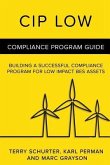Around the globe, economic activity is being directed towards Asia where India is emerging out to be a prominent country with gargantuan potential for economic growth, hereby grabbing the attention of international investors. India is transpiring as a country with "leading power", the new stance requires a lot of proactive participation from India to prove itself at the international front in times to come1. Although, acknowledging the economic build out of the country, does not stop one to anticipate on the lines of various challenges in the path of progression, such as scams which have been witnessed in the country. The institutional endeavour for promoting risk disclosure has been protruded by the Institute of Chartered Accountant of England and Wales in United Kingdom which envisages on the issuance of separate statement on 'Business Risk' by the corporations. It brings out the standpoint that the directors who demonstrate that they are actively managing risk and divulgating this information will be benefited in the form of low cost of capital. The concept of 'risk' has a negative notion in the minds of people. Moreover, when associating risk with the investment decision, investors anticipate a higher return for a given level of risk and at the same time they aspire to be fully informed. Corporate risk disclosure assists an investor to decide the risk of his portfolio and aid in ascertaining the riskiness of a company. This book is based on a study whose prime objective entails analysing the extent of risk disclosure in Indian context. Prior evidence documents risk disclosure practices in countries where the divulgation of risk information is mandatory through adoption of accounting standards primarily dealing with financial risk. It makes all the more important to study risk disclosure in countries prior to mandatory adoption of the accounting standard dealing with financial risk, thus underscoring the voluntary risk disclosure practices by the corporations. The focus of present study is to analyse voluntary risk disclosure in the context of Indian listed companies. The study adopts automated content analysis method to capture risk disclosure in the annual reports narratives. The application of automated method will add precision and accuracy trying to overcome the subjectivity and erroneous effect of prior manual content analysis method The prior risk disclosure research has been primarily, directed towards identifying firm level antecedents that lead to risk disclosure. Researchers direct the future work towards finding out corporate governance level board characteristics affecting risk disclosure as an important avenue to be explored. This study undertakes a comprehensive view by analyzing firm level corporate governance in the form of board composition along with firm characteristics and past year risk disclosure in order to identify the drivers of risk disclosure in the Indian context. The identification of antecedents of risk disclosure will assist the investors and stakeholders to locate which antecedents brings in more transparency through dissemination of risk information and contrarily which obstructs risk disclosure. Additionally, the effect of risk disclosure on firm's performance is analysed for enriching the understanding of corporate managers and investors. Prior research linking risk disclosure and firms performance is very scarce and document inconclusive findings. The paucity in the empirical evidence both at the international and domestic front aggravates the importance of the topic and point the need to explore the area to fill the void. Hence, an endeavour is made to find out the extent of risk disclosure in the Indian listed companies and its effect on the firm performance.








